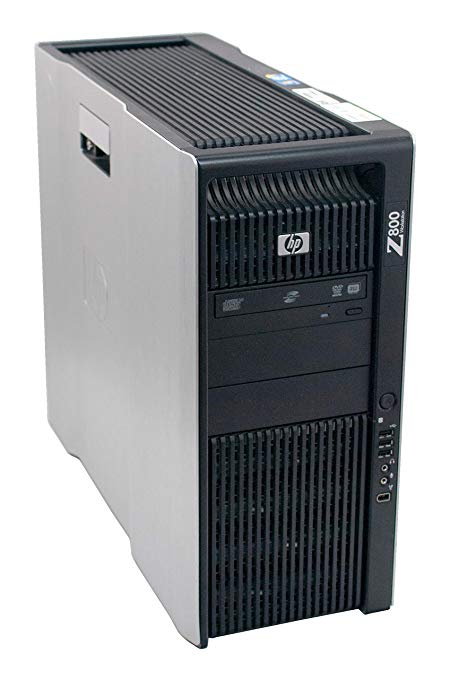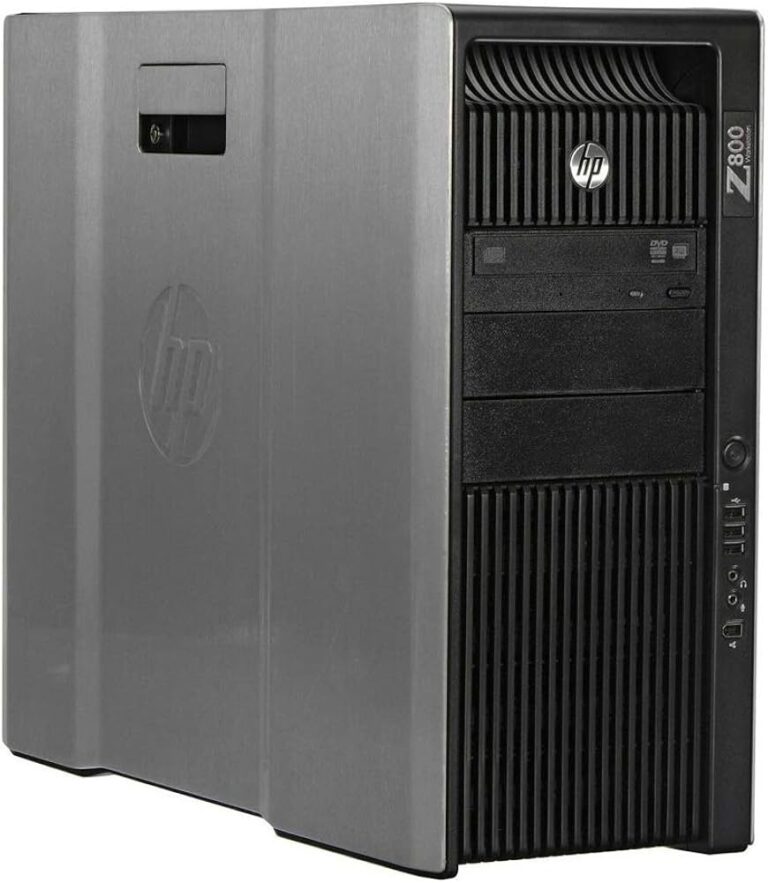The HP Z800 Workstation in 2025: Performance, Use Cases, and Proxmox Compatibility
When the HP Z800 workstation was first released back in 2009, it was nothing short of a powerhouse. Designed for professionals in fields like video editing, 3D rendering, CAD, and scientific computing, the Z800 represented the peak of performance for its era. Equipped with Intel Xeon processors, support for massive amounts of RAM, and advanced expansion capabilities, it quickly became a staple in many studios, research labs, and production environments.
But technology moves fast. By 2025, the Z800 is over a decade old. So the big question is: how well does it still perform today, what is it being used for, and can it still run modern platforms like Proxmox? Let’s take a deep dive.
A Look Back: The Original Z800 Specifications
The Z800 was designed to be future-proof in its time. Some of its standout features included:
- Dual Intel Xeon 5500/5600 series support – allowing up to 12 physical cores and 24 threads when fully equipped.
- Memory capacity up to 192 GB – using ECC DDR3 RAM.
- Multiple PCIe slots – for GPUs, RAID cards, or other professional hardware.
- High storage expandability – room for several hard drives and SSDs.
- Professional-grade build – reliable cooling, power delivery, and workstation stability.
In 2009, this was cutting-edge. A Z800 fully loaded could cost tens of thousands of dollars.
How Does the Z800 Perform in 2025?
Fast forward to today, and the Z800 is no longer a monster by modern workstation standards. However, it’s far from obsolete. Its performance depends heavily on the upgrades and configurations applied over the years.
1. CPU Performance
The Xeon 5600 series processors are now very old. Compared to today’s CPUs, they lack modern instruction sets, efficiency improvements, and raw speed. However, since the Z800 supports dual processors, it can still provide a decent amount of parallel performance. For workloads that can use many threads, the Z800 holds up surprisingly well.
Still, in single-core tasks, modern mid-range CPUs like Intel i5 or AMD Ryzen 5 easily outperform it. So while it’s no longer suitable for cutting-edge rendering or simulation, it’s still useful for certain parallelized workloads.
2. RAM Capacity
One area where the Z800 still shines is memory capacity. With support for up to 192 GB of ECC RAM, it remains competitive for tasks requiring large memory pools, such as virtualization, database hosting, or handling big data sets.
Even though DDR3 is outdated and slower compared to DDR5, the sheer amount of available memory keeps the Z800 relevant.
3. GPU and Expansion
The Z800’s PCIe 2.0 slots allow it to support a wide range of GPUs, though newer cards may not perform at their full potential due to bandwidth limits. Still, pairing a Z800 with a modern mid-range GPU (like an NVIDIA RTX 3060 or even higher if power requirements allow) can breathe new life into the machine.
4. Storage
Originally built for HDDs, the Z800 can be upgraded with SSDs. While NVMe support isn’t native, users can add NVMe drives through PCIe adapters, giving the workstation faster modern storage options.
What Is the Z800 Used for in 2025?
Despite its age, the Z800 still finds use in various scenarios:
1. Homelabs and Virtualization
Thanks to its high RAM capacity and multi-core CPUs, the Z800 remains popular in the homelab community. Enthusiasts use it to run multiple virtual machines, test software, and simulate production environments.
2. File Servers and NAS
With ample storage bays and expandability, many people repurpose Z800s as home servers or NAS devices. While not the most power-efficient, they are reliable and cheap to obtain second-hand.
3. Learning and Experimentation
For students, IT learners, or hobbyists, the Z800 is an affordable way to get hands-on with enterprise hardware. Its dual Xeon setup provides valuable exposure to server-grade systems.
4. Media Servers
Some users convert Z800s into Plex or Jellyfin media servers, capable of handling transcoding tasks when paired with a decent GPU.
5. Retro Workstation Projects
Collectors and enthusiasts sometimes keep Z800s as a piece of computing history. They are also used to run older professional software that requires a workstation environment.
Can the Z800 Run Proxmox in 2025?
This is one of the most common questions about the Z800 in modern times: Can it run Proxmox, a popular virtualization platform?
The answer is: Yes, the Z800 can run Proxmox VE in 2025, but with some caveats.
Compatibility Factors:
- CPU Virtualization Support
- The Xeon 5500/5600 series supports Intel VT-x and, in some models, VT-d (for direct hardware pass-through). This means Proxmox can run virtual machines effectively, including GPU passthrough if supported by the specific CPU model.
- RAM
- With up to 192 GB of ECC memory, the Z800 can handle dozens of VMs or containers. This makes it excellent for homelabs, training, or light production workloads.
- Storage
- Proxmox requires modern storage performance for best results. Using SSDs (via SATA or PCIe adapters) significantly improves VM performance compared to spinning HDDs.
- Network
- The Z800’s onboard gigabit Ethernet is sufficient for most homelab uses. However, modern users may want to add a 10 GbE NIC via PCIe.
Limitations:
- Power Consumption: The Z800 is not power-efficient. Running 24/7 as a server can be costly compared to modern hardware.
- Age of Components: Hardware failure risk increases with age, especially for power supplies and fans.
- Driver Support: While Linux (and thus Proxmox) runs well on older hardware, certain new features may not be available.
Still, for those who want to experiment with Proxmox or set up a virtualization lab, the Z800 is a capable and budget-friendly option.
Conclusion
In 2025, the HP Z800 is undeniably old hardware, but it’s far from useless. While it can’t compete with modern workstations in raw performance or efficiency, its expandability, RAM capacity, and reliability keep it relevant in niche roles.
- For homelabs, virtualization, and Proxmox setups, it remains a solid choice.
- For file servers, media servers, and experimentation, it continues to provide value.
- For those who simply enjoy retro hardware, the Z800 stands as a reminder of how powerful workstations once were.
Yes, the Z800 can still run Proxmox VE in 2025, and with the right upgrades, it can serve as a capable virtualization host. However, users should weigh the costs of power consumption and maintenance against the benefits.
In many ways, the Z800 has aged gracefully—not as a performance beast, but as a reliable workhorse for enthusiasts, learners, and homelabbers worldwide.





